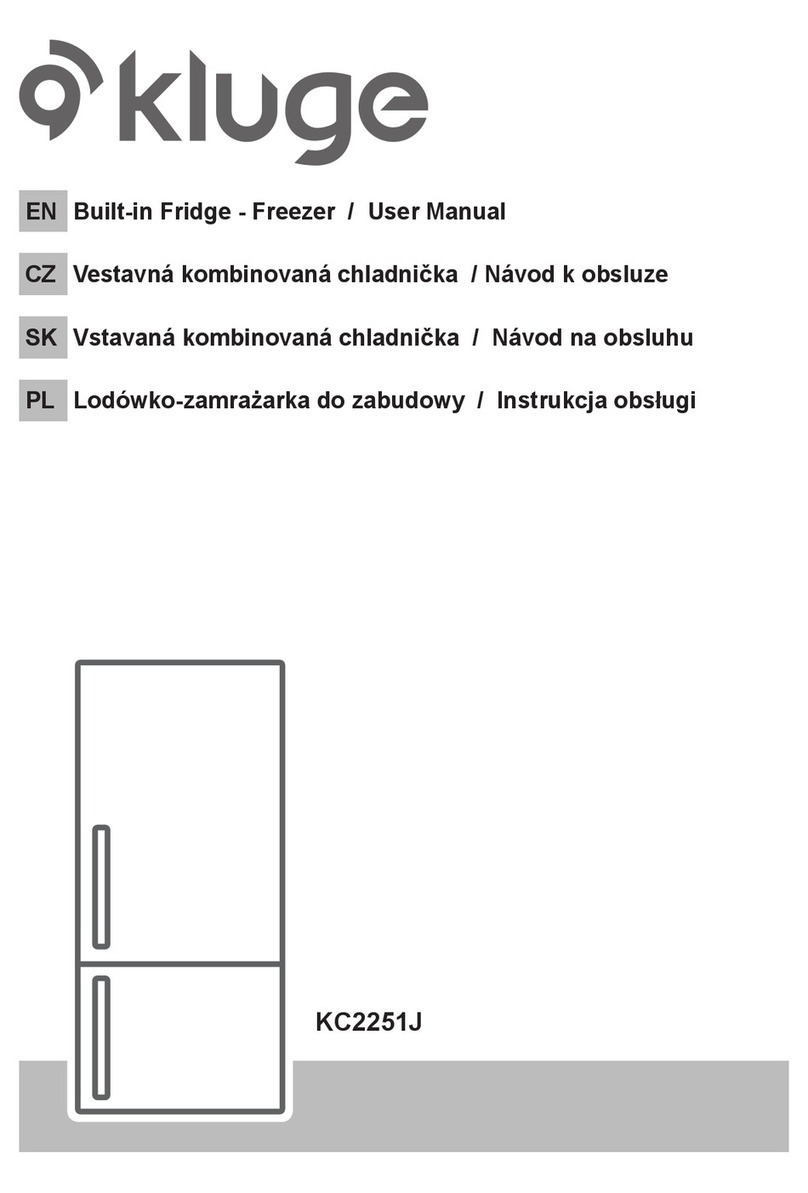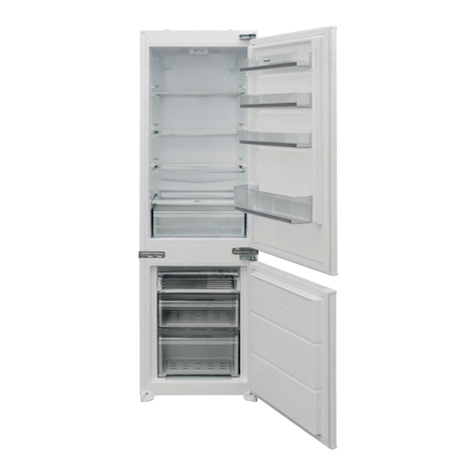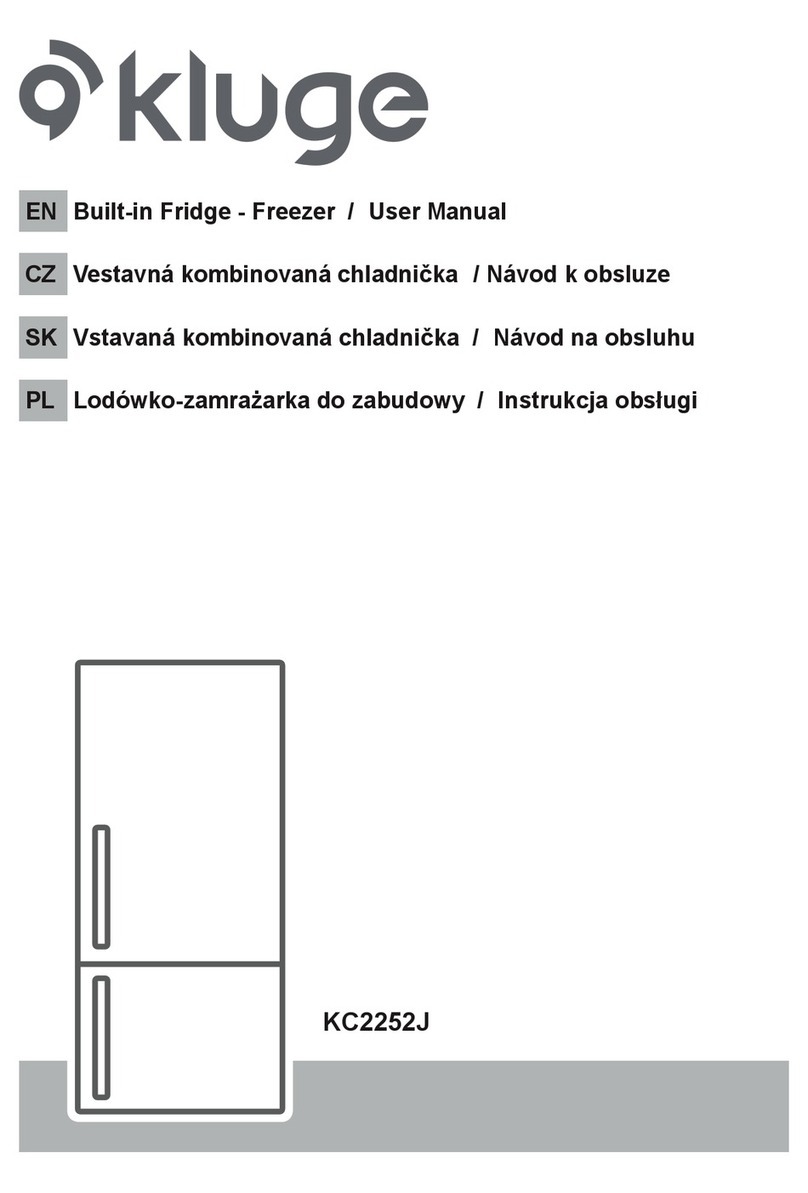
EN
10 BEFORE USING THE APPLIANCE
Installing and operating your fridge freezer
Before starting to use your fridge freezer, you should pay
attention to the following points:
• The operating voltage for your fridge freezer is 220-240 V
at 50Hz.
• The plug must be accessible after installation.
• Your fridge freezer may have a smell when it is operated for
the rst time. This is normal and the smell will fade away
when your fridge starts to cool.
• Before connecting your fridge freezer, ensure that the
information on the data plate (voltage and connected load)
matches that of the mains electricity supply. If in doubt,
consult a qualied electrician.
• Insert the plug into a socket with an ecient ground
connection. If the socket has no ground contact or the plug
does not match, we recommend that you consult a qualied
electrician for assistance.
• The appliance must be connected with a properly installed
fused socket. Power supply (AC) and voltage at the
operating point must match with the details on the name
plate of the appliance (name plate is located on the inside
left of the appliance).
• We do not accept responsibility for any damages that occur
due to ungrounded usage.
• Place your fridge freezer where it will not be exposed to
direct sunlight.
• Your fridge freezer should never be used outdoors or
exposed to rain.
• Your appliance should be at least 50 cm away from stoves,
gas ovens and heater cores, and at least 5 cm away from
electrical ovens.
• When your fridge freezer is placed next to a deep freezer,
there should be at least 2 cm between them to prevent
humidity forming on the outer surface.
• Do not place heavy items on the appliance.
• Clean the appliance thoroughly, especially the interior,
before use (see Cleaning and Maintenance).
• The installation procedure into the kitchen unit is given in







































